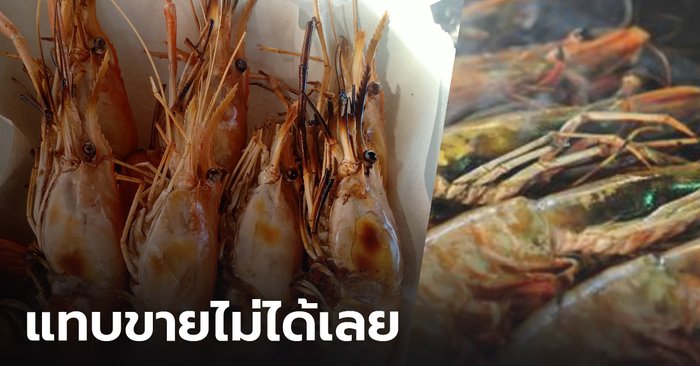Will wait for the rotting day or will turn the crisis to an online solution “foodThai Sea –shrimp“AmongCOVID-19
Seafood especially shrimp Became the hostile thing at this time for Thai people Because the cause of the spread of the virusCOVID-19 From the shrimp market in Mahachai, Samut Sakhon Province, it became the trigger for people to pause with seafood at this time.
For example, “Aunt Tiew”, a seafood trader in a Srinakarin market, complained to ThaiQuote to listen to her lassily. All that is missing for her is income. From the original that was enough to sell But since the presence of COVID-19 The cash disappeared immediately. Because it’s not that bad sales But she asked to be called “Hardly sold” would be more suitable
Aunt Tiew’s solution She asked her daughter to help sell online and at a discount from fresh seafood. She uses the cooking method. Packed into a box And started selling in the residential village before with the villagers together And therefore sold online and delivered via delivery as well
It is therefore another way of salvation for Aunt Tiew and his family. Because not so In this hour if not adjusted to do cooked online sales Waiting only for the spoiled days to visit her seafood only
The Pa Tiew case is a clear example of finding a way to survive.BusinessSeafood in this period Also from the data from the Kasikorn Research Center It makes it clearer that seafood is going to a point where it might be worse. With a very low recovery price from the impact of COVID-19.
KASIKORN RESEARCH CENTER estimates that the average price of white shrimp in every size in front of the farm in 2020 should be at the level of 130-140 baht / kg compared to the previous year when the average price was 141.71 baht / kg, shrinking in the range of 1.0%. Up to 8.0
Of course, shrimp is a popular food that Thai people consume as well. But coming to the market might not be the right moment for the COVID-19 situation at the moment, changing the way we sell it by targeting the clean, cooked, ready-to-serve online world. It seems to be another way to survive for the women who sell “seafood”
– .


